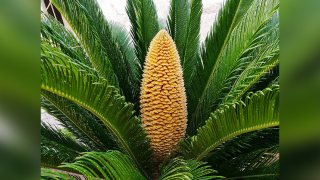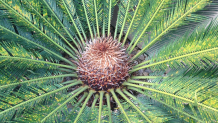
While many household and ornamental plants can be toxic to dogs and cats, a specimen of note for South Florida pet parents is the sago palm.
Also known as cycads or zamias, these types of palms are popular landscaping choices in warmer parts of the country.
Miniature versions in decorative pots are marketed as houseplants; despite their diminutive size, they still pose a threat to our furry friends.
Each year, the Pet Poison Helpline receives hundreds of calls about sago palm toxicity. Sago palms contain numerous chemical compounds that can severely damage a pet’s gastrointestinal tract, central nervous system, and liver.
Get South Florida local news, weather forecasts and entertainment stories to your inbox. Sign up for NBC South Florida newsletters.
Clinical signs of toxicity can appear within fifteen minutes after ingestion, though in some cases, symptoms may not appear for several hours.

Shortly after ingestion, pets generally experience vomiting, diarrhea and severe abdominal pain. Neurological signs are soon to follow. These include weakness, falling, tremors, wobbly gait and seizures.
Local
Within one to three days, pets will begin to experience liver failure. Pets can experience dangerous drops in blood sugar levels, which often affect the body’s blood clotting abilities. This in turn can lead to internal bleeding, which is fatal when left untreated.
While all parts of the sago palm are poisonous, the seeds they produce pack an especially toxic punch.
The leaves and fronds are spiked; upon learning the hard way that these are not especially fun toys, many pets quickly lose interest. The seeds, however, are often mistaken for food or toys, and contain the highest concentrations of toxins.
Pets who ingest any parts of a sago palm must be seen by a veterinarian right away. The treatment plan may include induction of vomiting, or an activated charcoal treatment to absorb the toxin. Do not attempt to induce vomiting at home.
Gastrointestinal and liver protectants are usually recommended, as well as hospitalization and fluid therapy. Due to the severity of sago palm toxicity, treatment plans are intense and aggressive.
If your pet has eaten sago palm, but seems fine, he must still be seen by a veterinarian right away. It can take as long as three days for signs of illness to present themselves, yet damage to the internal organs is silently taking place. Liver damage in cats begins to set in almost immediately.
Even with prompt, aggressive treatment, survival rates are only about fifty percent. Therefore, the best way to ensure your pet does not fall victim to sago palm toxicity is to keep her away from them entirely.
Rethink your landscaping, and if possible, have sago palms removed. Make sure the yard is cleared of debris and seeds before letting your pet roam the property unsupervised.
If removing the entire plant is not an option, routinely cut off the seed-producing cones, and clear any seeds that fall to the ground. If this is not possible, consider a basket muzzle or cage muzzle.
These humane training tools allow pets to open their mouths for panting, vocalizing or drinking, but prevent them from picking up objects with their mouths. Moving forward, opt for non-toxic, native plants provide food for wildlife and benefit our unique ecosystem.
Dr. Kupkee is medical director at Sabal Chase Animal Clinic. https://sabalchaseanimalclinic.com/



